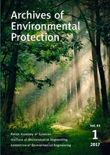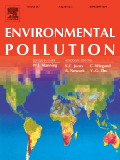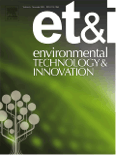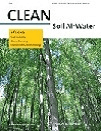
International Journal of Environmental Research
Scope & Guideline
Advancing knowledge for a sustainable future.
Introduction
Aims and Scopes
- Environmental Pollution Assessment:
The journal publishes research assessing various environmental pollutants, including heavy metals, microplastics, and organic contaminants, across different ecosystems. This includes studies on their sources, distribution, and impacts on human health and biodiversity. - Sustainable Waste Management:
Research on sustainable approaches to waste management, including recycling, waste-to-energy processes, and the treatment of industrial and municipal waste. The journal emphasizes innovative methods for reducing waste and promoting resource recovery. - Climate Change and Environmental Impact Studies:
The journal includes studies that evaluate the effects of climate change on ecosystems, agriculture, and human health, alongside research on mitigation strategies and adaptation practices. - Innovative Remediation Technologies:
It publishes research on novel remediation technologies for contaminated sites, including bioremediation, phytoremediation, and advanced oxidation processes, highlighting their effectiveness and mechanisms. - Environmental Policy and Governance:
The journal also addresses the intersection of environmental science and policy, exploring the implications of environmental regulations, governance frameworks, and public health initiatives.
Trending and Emerging
- Microplastics and Nanoplastics Research:
There is a noticeable increase in research addressing the sources, impacts, and remediation strategies for microplastics and nanoplastics, reflecting heightened global awareness of plastic pollution. - Digital Technologies in Environmental Monitoring:
Emerging themes include the application of digital technologies, such as the Internet of Things (IoT) and machine learning, for real-time environmental monitoring and data analysis, enhancing the precision of environmental assessments. - Circular Economy Practices:
Research focused on circular economy practices, including resource recovery and waste valorization, is trending, indicating a shift towards sustainability and the efficient use of materials. - Health Impacts of Environmental Change:
There is an increasing trend in studies linking environmental changes, such as climate fluctuations and pollution, to public health outcomes, highlighting the intersection of environmental science and health. - Innovative Bioremediation Techniques:
The journal is seeing a rise in publications on innovative bioremediation techniques, showcasing advances in using microorganisms and plants to remediate contaminated environments.
Declining or Waning
- Traditional Agricultural Practices:
Research on conventional agricultural practices and their environmental impacts has decreased, possibly due to a shift towards sustainable and precision agriculture methodologies. - Static Water Quality Assessments:
The prevalence of studies focused solely on static water quality assessments has waned, as there is an increasing emphasis on dynamic modeling and the effects of climate variability on water resources. - Generalized Air Quality Studies:
Broad studies on air quality without specific contextual focus are becoming less common, as the journal shifts towards more targeted investigations that account for local conditions and specific pollutant sources. - Single-Pollutant Focus:
Research that concentrates on the effects of a single pollutant is declining, in favor of studies that look at the interactions between multiple pollutants and their cumulative environmental impacts.
Similar Journals

Archives of Environmental Protection
Advancing the Frontiers of Environmental KnowledgeArchives of Environmental Protection, published by the Polish Academy of Sciences, is a pivotal journal in the field of Environmental Science. With an ISSN of 2083-4772 and E-ISSN of 2083-4810, this journal serves as a critical platform for disseminating innovative research and comprehensive reviews that address the complexities surrounding environmental issues. As of 2023, it holds a respectable Q3 ranking in Environmental Science, reflecting its relevance and contribution to the academic community, indicated by a Scopus rank of 124 out of 233 in the General Environmental Science category. Although it operates without Open Access, the journal's consistent publication from 2007 to 2024 emphasizes its commitment to advancing knowledge in diverse areas of environmental protection. Researchers, professionals, and students are encouraged to engage deeply with the wealth of insights offered through the rigorous peer-reviewed articles presented in this journal, which strive to foster sustainable practices and environmental stewardship.

ENVIRONMENTAL POLLUTION
Illuminating the path to environmental health and safety.Environmental Pollution, published by Elsevier Science Ltd, stands at the forefront of research related to environmental contaminants and their effects on health and ecosystems. With an impressive impact factor reflected in its Q1 rankings across various categories including Health, Toxicology, and Pollution, this journal is a pivotal resource for academics and professionals in the fields of environmental science and toxicology. The journal, established in 1973, continues to disseminate high-quality articles that explore the implications of pollution and advance knowledge on toxicological impacts and mitigation strategies. Although it is not an open-access journal, it offers robust visibility within the scientific community, ensuring vital research reaches those who need it most. Researchers, students, and professionals dedicated to understanding and addressing the challenges of environmental pollution will find Environmental Pollution to be an indispensable platform for their work, guiding the ongoing dialogue on sustainable practices and public health protection.

International Journal of Civil Engineering
Advancing Sustainable Solutions in Civil EngineeringThe International Journal of Civil Engineering, published by Springer International Publishing AG, is a premier platform dedicated to advancing the field of civil engineering. With a notable impact factor and a strong reputation reflected in its Q2 quartile rankings in both Civil and Structural Engineering as well as Geotechnical Engineering and Engineering Geology, this journal facilitates the dissemination of high-quality research from 2009 through 2024. Researchers and professionals can access cutting-edge studies and innovative practices that address contemporary challenges in civil engineering, such as sustainable infrastructure development, environmental impacts, and advanced material technologies. Situated in Switzerland, the International Journal of Civil Engineering emphasizes the critical interplay between theory and application, making it an essential resource for students, academics, and industry leaders seeking to stay at the forefront of their disciplines.

Environmental Engineering and Management Journal
Empowering scholars to tackle pressing environmental challenges.Welcome to the Environmental Engineering and Management Journal, a pivotal platform for disseminating knowledge and innovative research in the fields of Environmental Engineering, Management, Monitoring, Policy, and Law. Published by GH Asachi Technical University of Iasi in Romania, this journal has been committed to fostering discussions and advancements in environmental solutions since its inception in 1988, with continuous publication from 2002 to 2024. While classified in the Q4 category across various environmental disciplines in 2023, it remains an important resource for scholars and practitioners navigating the complexities of pollution and environmental management. With an ISSN of 1582-9596 and an E-ISSN of 1843-3707, this journal encourages submissions that address pressing ecological challenges and provide actionable insights. Although currently not open access, it seeks to expand its reach and relevance within the global academic community. Join us as we explore critical environmental issues and contribute to sustainable practices worldwide.

Environmental Technology & Innovation
Uncovering Innovations for a Healthier EnvironmentEnvironmental Technology & Innovation is a leading academic journal published by Elsevier, focusing on groundbreaking research and advancements in the fields of Environmental Science, Plant Science, and Soil Science. Since its inception in 2014, this prestigious journal has established itself in the top Q1 quartiles of its categories, reflecting its commitment to publishing high-quality, impactful research. As evidenced by its impressive Scopus ranks, including a rank of #14/516 for Plant Science and #5/159 for Soil Science, it serves as a vital resource for scholars, researchers, and professionals aiming to advance their understanding and innovation in environmental technologies. Although it operates under a subscription model, the journal provides significant insights and access options, making it an essential addition to any researcher's library. With its emphasis on sustainability and technological advancements, Environmental Technology & Innovation remains at the forefront of addressing global environmental challenges and fostering innovative solutions.

CLEAN-Soil Air Water
Innovating Research for Cleaner Soil, Air, and WaterCLEAN-Soil Air Water, an esteemed journal published by Wiley, serves as a vital platform for disseminating research in the fields of environmental chemistry, pollution, and water science and technology. Operating under an Open Access model, it embraces the principles of knowledge sharing, making significant research findings readily accessible to a global audience. With an ISSN of 1863-0650 and an E-ISSN of 1863-0669, the journal has demonstrated its importance in the academic community, reflected in its Scopus rankings within the top quartiles of its categories. Established in 2007 and continuing through to 2024, CLEAN-Soil Air Water offers researchers, professionals, and students an opportunity to explore innovative studies that address pressing environmental challenges, facilitating an exchange of novel ideas and techniques essential for sustainable development. With a publication footprint in Germany and a growing international reputation, this journal is an invaluable resource for those dedicated to advancing the science and practices of environmental stewardship.

Environmental Health Engineering and Management Journal
Bridging the Gap Between Ecology and Human Well-beingEnvironmental Health Engineering and Management Journal is a premier platform dedicated to the dissemination of research findings in the essential field of environmental health. Published by Kerman University of Medical Sciences in Iran, this Open Access journal has been a beacon of scientific inquiry since its inception in 2014. With an ISSN of 2423-3765 and E-ISSN 2423-4311, it facilitates broad accessibility to cutting-edge research that addresses the complex interactions between environmental factors and human health. With a notable categorization in the Q3 quartile for Environmental Science and Public Health, alongside Q4 in Chemical Health and Safety, the journal underscores its commitment to quality and relevance. Currently ranked #132 out of 233 in Environmental Science within Scopus, it serves as a crucial resource for researchers and practitioners striving to tackle contemporary environmental challenges. The journal's scope includes innovative methodologies, environmental risk assessment, and sustainable health practices, positioning it as an indispensable reference for those invested in improving public health outcomes through environmental engineering and management.

Euro-Mediterranean Journal for Environmental Integration
Exploring Innovative Approaches to Environmental IntegrationThe Euro-Mediterranean Journal for Environmental Integration, published by SPRINGER HEIDELBERG, serves as a pivotal platform for interdisciplinary research in the realm of environmental science, particularly focused on the unique ecological and socio-economic context of the Euro-Mediterranean region. With its ISSN 2365-6433 and E-ISSN 2365-7448, this journal aims to foster a collaborative approach to environmental challenges, integrating insights from various fields such as ecology, geography, and sustainable development. Since its inception in 2016, it has made significant strides, achieving a Q3 ranking in Environmental Science and maintaining a notable position within the Scopus rankings, sitting at #102 out of 233 in the general environmental science category, which reflects its growing influence in academic discourse. The journal is committed to open dialogue among researchers, professionals, and students aimed at advancing knowledge and promoting innovative solutions to pressing environmental issues. Access to its comprehensive articles and findings will be key to contributing to a more sustainable future.

GLOBAL JOURNAL OF ENVIRONMENTAL SCIENCE AND MANAGEMENT-GJESM
Fostering collaboration for a greener planet.Global Journal of Environmental Science and Management (GJESM), published under the distinguished leadership of Professor J. Nouri, is an esteemed academic platform dedicated to advancing the interdisciplinary discourse surrounding environmental science and management. With an ISSN of 2383-3572 and an E-ISSN of 2383-3866, GJESM has established itself as a prominent Open Access journal since 2014, allowing for unrestricted sharing of knowledge and research findings. Based in Iran, this journal caters to a diverse global audience, featuring contributions that span various critical domains including agricultural and biological sciences, environmental engineering, pollution management, and social sciences, evidenced by its impressive 2023 Q1 and Q2 quartile rankings across multiple categories. The journal’s Scopus rankings demonstrate a robust standing in the academic landscape, with exciting placements that underscore its relevance in key fields. By bridging the gap between scientific inquiry and practical application, GJESM serves as a vital resource for researchers, practitioners, and students seeking to understand and address the pressing environmental challenges faced by our planet today.

Current Pollution Reports
Transforming Environmental Challenges into SolutionsCurrent Pollution Reports, published by Springer Heidelberg, is an esteemed journal in the field of environmental science, focusing on the multifaceted aspects of pollution, waste management, and water science. With an impressive 2023 impact factor reflected in its status as a Q1 journal across multiple categories—including Management, Monitoring, Policy and Law, Pollution, Waste Management and Disposal, and Water Science and Technology—this journal stands at the forefront of environmental research and policy discourse. The journal, which has been in publication since 2015, aims to provide a platform for scholars and practitioners to share their findings, promoting the exchange of innovative ideas and effective solutions to pressing environmental challenges. With its rigorous peer-review process, Current Pollution Reports serves as an invaluable resource for researchers, professionals, and students committed to understanding and addressing pollution and its impacts on our planet.